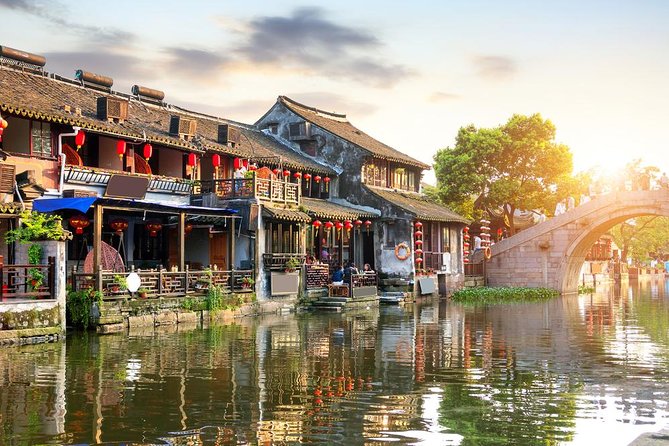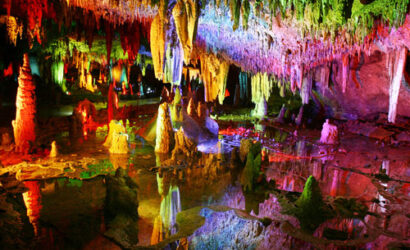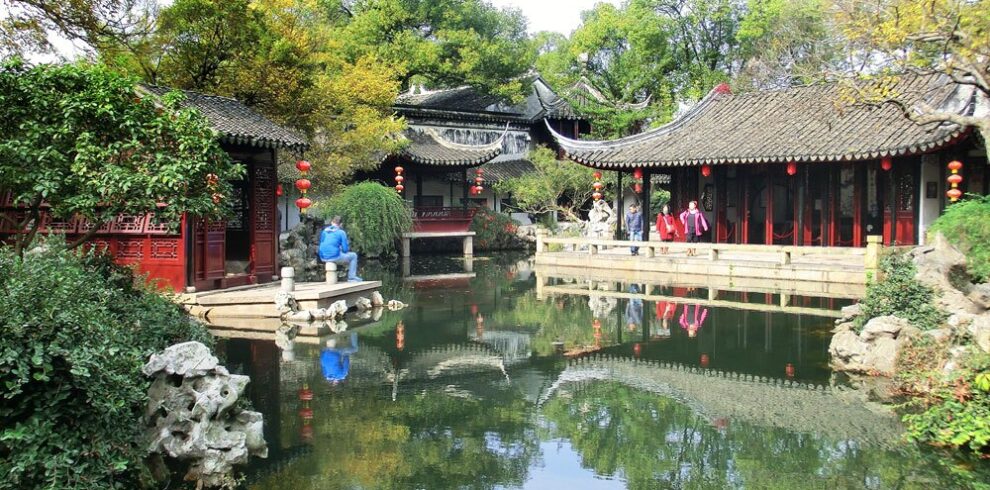Xitang Water Town Tour-Highlights:
1.Non shopping tour
2.No tourist traps
3.No hidden fee
4.The best use of time
5.Flexible itinerary
6.Licensed guides and tour vehicles
7.Unbeatable price and 5 stars service
Overview
Todays activities:Xitang Ancient Water Town
Morning:
Meet your guide at your hotel in the morning
Stone Skin Lane —- The stone skin Lane is 68 meters long, made of 216 slabs only 3 cm thick, and the two sides are the water town Wangzu Zunwentang and the seed Futang. The slab is hollow as a sewer. It is named after “stone thin as skin”.
Ceilinged/Roofed Corridors—— are also called the rain corridors. Many ancient towns south of the Yangtze River have them. It looks like a street with wooden pillars and tile roofs. The rain corridor in Xitang is very distinctive because if you walk along the river in the old town, there will always be a shelter for you. Especially on rainy days, walking under the porch and listening to the patter of rain and the mysterious scenery outside the corridor. There is a strong artistic conception, so the rain corridor of Xitang has the reputation of “ceilinged corridor”. The total length of the rain corridors in Xitang is nearly a thousand meters. Most of them are built on the riverside. Walking among the corridors, you can visit the various shops along the street.
Xi Garden/West Garden—–The West Garden was originally the villa of Zhu family of Ming Dynasty and was changed hand to Sun family. The garden is pretty charming with trees, folwers, rockwork, pavilion, ponds and other ornaments. The west garden is scenic and relaxing. There is a tea house called ”Ting Tao Pavilion” on the rockwork on the east side of the garden. Famous Chinese poet Liu Yazi (1887-1958) once came here and took photos. Small bridges, sightseeing corridor, waterside pavilions, artificial waterfalls lend the garden a touch of elegance.
Button Museum-—–Xitang is hailed as the hometown of button. The Button Museum is located on West Street with six exhibition halls, respectively showcasing ancient buttons, modern buttons, contemporary buttons, shell buttons processing, usage of button, and Chinese knots.
Intoxicating Garden—–The garden was built in Ming Dynasty and its buildings and courtyards are well preserved. The garden was divided into three parts. Green ponds and bamboos make the garden intoxicating. The most impressive thing should be a small brick bridge that allows a single person pass. It is both practical and ornamental. Wang family had a great passion for calligraphic and arts. The Book Hall showcases some paintings of Wang family.
Folk eave tiles exhibition hall——Eave tile is a kind of simple architectural materials. Because it is difficult to preserve and has a long history, it has particular historic significance. The folk eave tiles exhibition hall showcases about 300 types of architectural materials, such as traditional eave tiles, tile carving, pottery figurine, dripping lace and so forth.
Chinese Wine Culture Museum——Xitang Ancient Town was a wine town in history. Drinking wine and humming poetry had always been two pursuits of scholars and literati. Many famous Chinese poets once came to Xitang and drink good wine. The Chinese Wine Culture Museum opens a window for tourist to have a better knowledge to Chinese wine culture with hundreds of exhibits. It is the epitome of Chinese traditional culture.
Huguo Grain Official Temple—–The temple of the Guo Suiliang is commonly known as the “Seven Old Masters Temple”. In Xitang Huguo Suiliang Temple in Jiaxing City, Zhejiang Province, the worship of the “Jingong” is the local protection god of Xitang. It is said that there are really people in history, surnamed Jin, ranked seventh. Once protected the local people from prison, the people called the seven old master.















